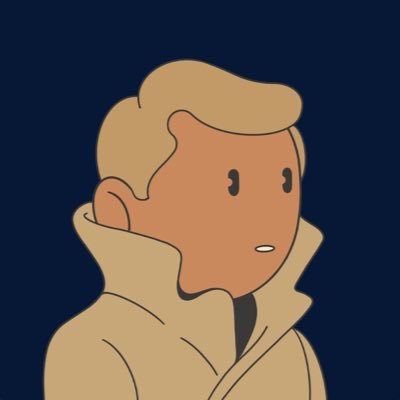About outrunyouth

Victor, known as outrunyouth, creates digital landscapes that sit somewhere between dream and memory. Spaces shaped by emotion and atmosphere. His work draws from romanticism and the symbolic weight of myth, often unfolding in vast, otherworldly environments where lone figures move through light, shadow, and suggestion.
Though the visuals are digital, there’s something tactile in their construction: surreal forms, sculpted imperfections, and an attention to presence over polish. Each piece feels like part of a larger thread. His collections often take the form of visual dialogues, inviting the viewer to look closer and take part in something still unfolding.
The themes are open, but always intentional. They're rooted in longing, perspective, and the idea that art can be both a mirror and a question.
An interview with outrunyouth led by Carlo Borloni


Your works often feel like liminal spaces, half remembered, half imagined. What first
drew you to building these in-between worlds? Was there a defining moment or
influence that shaped your visual language?
I’ve always been drawn to the parts of life that feel like an interlude. Maybe it’s because I moved 12 times before I turned 16, or because those in-between moments ask nothing of you. The long walk home on a summer night, catching a flight to an unfamiliar place, the middle chapter of a story where nothing really happens but everything is felt. Those are the moments that stay with me. I think the duality between transience and escapism, and the mystery within that threshold, is the backbone of my work.


You describe your practice as rooted in mood and subtle storytelling. How do you
approach the construction of meaning in your images without relying on overt narratives?
I rely mostly on environmental cues, atmosphere, lighting, and composition. Often when I’m creating, I’m channeling something instinctive, almost like how you paint as a child. The tools I use might suggest control, but most of the time it’s just me moving things around, testing colours, and trying to get a feeling out of my head and into the image.
My goal has always been to prompt more questions than answers. I try to build environments that lead the viewer in, or reflect something back at them. That openness often gives my work an existential tone. It’s why I’m drawn to large-scale landscapes, surreal elements, tunnels, distant lights, and the idea of the universe as a presence. That’s the kind of meaning I aim to create. The one you have to discover yourself.


Scandinavian nature and folklore play a key role in your inspirations. How do these
Influences manifest in Conversations With The Universe? Are there specific motifs or
textures you’ve carried into this collection from your roots?
There are hints of folklore throughout Conversations With The Universe. Not in the form of specific creatures or stories, but in the feeling that something unknown is hiding between the trees, in the water, or deep in a cave. In the Believer triptych especially, the universe starts to feel like a living being. It becomes myth-like. A troll in the dark, the Nøkken beneath the surface, or a Hydra shifting through the trees.
Folklore is often seen as a warning, but to me it always felt more like an invitation. In the Seeker triptych, nature takes on that role. It becomes something elusive, almost consuming the subject without them knowing.


In your visual universe, tension and stillness seem to coexist. How do you balance
these opposing forces, both technically and conceptually, in your creative process?
I try to create scenes that feel like they’re on the edge of discovery. At first glance, it might seem like just a beautiful landscape, but there’s often a hint that something is about to unfold. The stillness is implied in the artwork, and the tension is created within the viewer. In a way, the balance is a result of that.


The series splits between two archetypes: the Seeker and the Believer. Are they
personal to you? Do you identify more with one or do they represent different phases
in your own inner journey?
Both of them are parts of me, but I relate most to the Seeker. I’ve always been drawn to what’s out there. The possibilities, the big questions, trying to make sense of things. It wasn’t until I started creating art that I realised much of what I was looking for was already within me. That shift didn’t take away the need to explore, but it gave it a different purpose.


Each artwork in the collection is also structured as a puzzle. What role does structure
and visual logic play in your work, and how do you reconcile that with the emotional
or symbolic weight of your compositions?
Each artwork and description in the collection holds a small part of a larger puzzle. The idea is that both triptychs are speaking to each other in their own abstract way, and together they point to a shared “answer”. It ties into the core of the collection, that the universe communicates, just not always in ways we can easily understand.
The puzzle structure felt like a natural extension of that. It’s about recognising patterns, looking closer, and slowly revealing meaning. It also invites the viewer to take part in the conversation, rather than just observe. I’ve never used riddles or puzzle mechanics in my work before, but I’ve always wanted to. This project finally felt like the right place for it.


You mentioned being drawn to things that feel “out of place.” How does that sense of
displacement or estrangement inform the emotional atmosphere of this new collection?
When something feels out of place, it suggests that there’s more going on than we can immediately see. I’m drawn to those moments because they hint at hidden layers, like reality glitching for a second. That feeling of estrangement creates room for wonder. A lot of that feeling comes from how I compose my scenes. I tend to lean into balance and symmetry. Just enough to feel intentional, but too exact to feel natural. That tension creates a kind of visual unease, like something is being held in place. It’s subtle, but over time it’s become almost like an invisible signature in my work. Even when the subject is surreal, the structure keeps it grounded, which makes the strangeness feel more believable.


The series explores a universal conversation, one that unfolds silently, across space
and self. How do you see your art contributing to or participating in this kind of
existential dialogue?
If the world is a conversation, with each part playing a different role or function, then my work would be the question mark. It doesn’t try to provide answers, but adds mystery to what might seem certain. Hinting at possible directions, yet leaving room for doubt.


You’ve collaborated with creatives across music, technology, and digital art. How has
this multidisciplinary experience shaped your perspective on artistic authorship and
storytelling in a project like this?
Working across music, tech, and digital art has made me more open to different ways of telling a story. It’s shown me that authorship doesn’t always mean control, sometimes it’s about creating a framework and letting others interpret or expand on it. In Conversations With The Universe, that shows up in how the puzzle works, how the viewer becomes part of the meaning. I think storytelling today is less about a single voice and more about creating space for interaction, reflection, and reinterpretation.


Looking ahead, what questions are you still seeking to answer through your art? And how has Conversations With The Universe shifted your understanding of your own practice?
I’m not trying to give answers so much as guide people toward finding their own. Conversations With The Universe has been both a reflection on the past and a way t o deepen the lore of my work. I’m interested in creating room for interaction. Spaces where people can step in, explore, and connect with the work in their own way. This collection feels like it ties everything I’ve worked on together, while creating a playground for what’s still to come.

Sign up for our newsletter to keep up with the latest news from NINFA
Sign up for our newsletter to keep up with the latest news from NINFA
Write us at: info@ninfa.io, or click here if you need support
Copyright © 2026 Ninfa Labs - 12094240962 - All rights reserved

